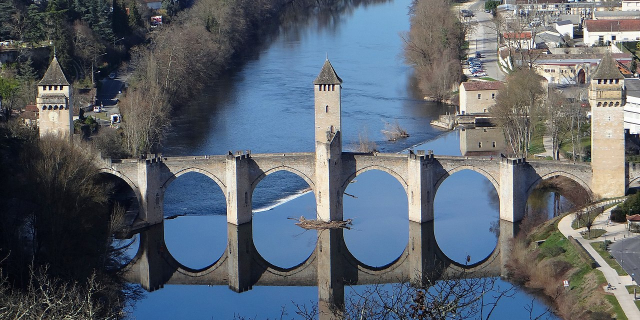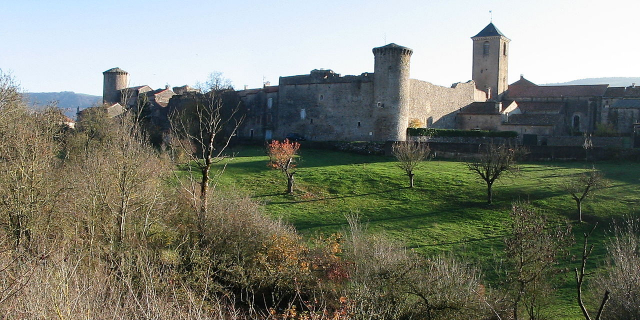Cordes-sur-Ciel
Cordes-sur-Ciel (French pronunciation: [kɔʁd syʁ sjɛl]; Occitan: Còrdas, [ˈkɔɾðos]) is a commune in the Tarn department, region of Occitania, Southern France. The fortified town was built in 1222 by Raimond VII, the Count of Toulouse, who, though not a Cathar, tolerated what other Catholics considered heresy.
Since the late 20th century, the village has become a popular tourist destination. Until 1993, the town's name was Cordes, a word thought to come from the Indo-European root "corte" meaning "rocky heights." That year, it was renamed Cordes-sur-Ciel, to indicate its height above the clouds over low-lying areas of the valley.
 Cordes seen from the valley
Cordes seen from the valley Minstrels playing in front of a church during a festival
Minstrels playing in front of a church during a festivalIn 1222, Cordes received its charter from the Count of Toulouse to become a "bastide".[1] It is generally considered to be the first of the bastides of Southwest France. (Some historians classify Montauban, built in the 12th century, as a bastide.) Bastides were "new towns," originally conceived to resettle and shelter people who had been displaced by the Albigensian Crusade. They were also intended to colonize southwest France and encourage agricultural and related market development. Though not fortified, bastides were often built in defensible locations.
Cordes was built between 1222 and 1229 to protect the scattered population of the area from conflict. It was intended to replace the village of Saint-Marcel, which was burnt down by the troops of Simon de Montfort in 1215, during the Northern baron's crusade against the Albigensians.
By the 1229 Treaty of Paris, Raymond VII of Toulouse conceded defeat to Louis IX of France. Under the terms of the treaty, he was authorized and encouraged to develop the bastides. In 1241, Jeanne, the Countess of Toulouse, married Alphonse, the brother of Louis IX and the Count of Poitiers. As a result, Cordes became a part of France in 1271 without having been militarily conquered.
In 1436 Rodrigo de Villandrando pillaged Cordes as part of the Hundred Years' War. The citizens of Cordes, having built their homes within the original 13th-century ramparts, later escaped heavy damage during the religious wars at the end of the 16th century. As a result, some excellent examples of 13th and 14th-century Gothic architecture have been preserved.
Modern historyThe town has attracted pilgrims and craftspeople. In the 1940s it became popular with artists such as the writer Albert Camus, the painter Yves Brayer, and the poet Jeanne Ramel-Cals. Though the name was just "Cordes" at the time, Ramel-Cals liked to call it "Cordes-sur-Ciel" to reflect the town's site on a hill above the clouds that frequently collect in the river valley. In 1993 the mayor changed the name to honor her.[2] In recent decades, it has become a popular spot for tourists interested in heritage destinations.



































Add new comment